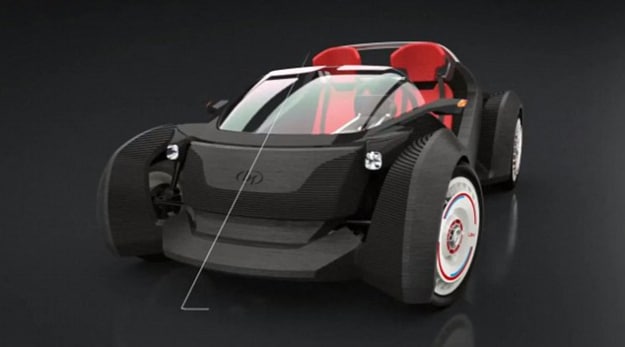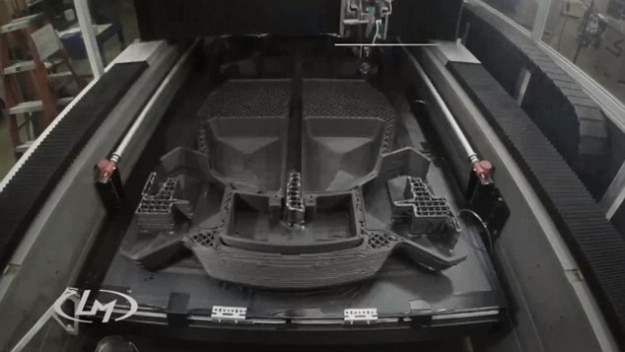So it finally happened! The world’s first fully 3D printed car has been completed and that in what could only be considered record time. We’ll get into that later, but the fact that we’re starting to see implementation of the 3D printer in areas so far unexplored is insanely exciting. The company behind this incredibly important feat is Local Motors, a company who’s taken on 3D printing in a scale hard to believe. Their commitment to 3D printing is not only important it’s become a huge inspiration for other companies worldwide.
It’s interesting that the news of this fully 3D printed car called Strati has not yet graced the headlines around the world. The completion of this car is a significant step towards a world where 3D printing is a central part of not only product prototyping, but also production, delivery and customer service.
What’s so incredibly about the Strati is not only that it’s a fully 3D printed car, but that it’s only composed of 40 parts. A modern conventional car is composed of 20,000 parts. Parts that can break and have to be repaired. The team over at Local Motors decided they wanted to make the car as low maintenance as possible saving not only material but also future headaches should something break. This way they only have to print the broken part and easily fit it.
The process from start to finish only took a whopping 44 hours and took place during the six-day International Manufacturing Technology Show 2014 in Chicago. That’s with 3D printing and assembly! People could watch the car being 3D printed and assembled, tinkered with and then later started up without any problems what so ever. This car is truly a testament to the incredible possibilities that 3D printing presents.
Strati, the world’s first 3D printed car will have a top speed of 40mph and a battery range of between 120 to 150 miles. Even though the chassis and the body of the car were 3D printed, the tires, seats, wheels, battery, wiring, suspension, electric motor and window shield were made using conventional methods. Once 3D printing evolves and offers the ability to print in whatever desired material, I have no doubts what so ever that we’ll see a car 3D printed, all in one process.
Imagine ordering your custom car on a computer, color, model, custom changes, and when payment has been made the printer starts doing its magic. That ladies and gentleman is what we’re looking at with the advancements of 3D printing technologies.
As a matter of fact, Local Motors hopes to offer 3D printed cars for sale at prices around £11,000 to £18,000 ($18,000 to $30,000) per vehicle. Not only will the process be faster and less costly, but buying a car and driving it is going to be infinitely more environmentally-friendly as well. The printer used to produce this particular 3D printed car can print parts in sizes up to 3ft by 5ft by 10ft. Not exactly your average desktop printer, but with the technology being optimized and made better and cheaper, I don’t think it’s unreal to think that we will one day see 3D printers like this offered on the consumer market. Now let’s see, what kind of car would you want to 3D print if you had the opportunity to choose?
Strati – World’s First 3D Printed Car



COMMENTS